

Somshekhar (Som) Kundral is SCS Engineer’s most recent go-getter to receive the honor of a Waste360 40 Under 40 Award. Described by his supervisor, SCS Vice President Bob Speed, as ‘humble, hungry, and smart,“ Kundral has spent no time in the slow lane.
He joined SCS as a young engineer in 2010, and quickly worked his way up, reaching a senior management position in a few years.
He now oversees multiple remediation projects, from small to multimillion-dollar jobs, taking ownership of environmental aspects of redevelopment, from remediating groundwater contamination to addressing landfill gas problems as challenges. He has come up with unique and far-reaching solutions through collaboration with his team to help clients achieve their business goals.
But before telling the story of Kundral, the senior-level engineer and project manager, let’s start with an earlier chapter.
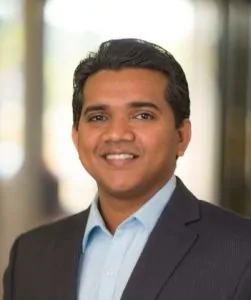
“It’s an interesting and kind of odd story,” he recalls. “A friend asked me to drive him to a job interview as he did not have transportation. The HR person, for some reason, asked both of us to interview [having heard I was an engineer too].
“I was dumbfounded and a little nervous as I was not prepared. I had to download my resume from my yahoo ID quickly… I thought, what have I got to lose? It’s a good engineering job with a large real estate company.”
He got the job and continues to seize practically every opportunity before him, growing from each one. Today at SCS, Kundral oversees several redevelopment projects, including a 500-acre landfill conversion to a large business park, which received the American Council of Engineering-Florida and the Environmental Business Journal awards.
“The landfill had a lot of environmental and geotechnical issues, with the largest ones around groundwater contamination and stormwater management. They are typical redevelopment challenges we need to overcome, and in this case, they were on a larger scale,” he says.
As the intricate strategy evolved, Kundral, working with his project advisor, Senior Vice President Eddy Smith, called many multidiscipline group huddles. Kundral has assessed, reassessed, stopped, and restarted. And he has brought in more engineers to pump up the team’s expertise and take this project to the next level.
“We are now halfway through. And I tell you, I don’t think I should have gray hair yet, but I have some now. Still, I feel so relieved because we have the formula to make this work. “We did it by integrating the groundwater and stormwater management systems,” he says.
The integration resolves two big issues: It, of course, addresses groundwater contamination. But Kundral and the team also want to maximize areas for redevelopment, and the design supports this goal as it eliminates the need for stormwater ponds.
To him, the job is as much about open communication and teamwork as technical talent.
“At the end of the day, no matter what we do, we deal with people. I believe in staying in front of our clients, explaining what to expect when, and I continually engage with staff who support me.” With this business park conversion, as they dove deeper, they saw more intricacies. “It was important to help our client see we were not simply trying to catch up; for them to understand we had to give more time and attention to do the job as best as it can be done.”
From age 28, when he came to SCS, Kundral was keenly aware that there was potential to do plenty and wanted to take on more. “I’m just curious to see what I can get into,” he says. He began with smaller projects, each with one or two focuses. Little by little, he could connect more dots. “I could start to see the big picture and wanted to know more about how to pull the whole project together,” he says.
While he mostly oversees redevelopment projects, he has also supported industrial waste permitting and compliance reporting endeavors. He describes the latter projects as straightforward.
“I prefer the more involved brownfields projects; there is more to learn when overseeing the work. Each site is unique, with different challenges. And each time, what you discover and how you approach it is different.”
Doing the work he loves has come with tradeoffs, such as giving up kayaking and cutting back on trips to the beach—once his favorite pastimes. “They’re fun, but they are day- and night-long ventures. By the time I got home, Saturday was gone. And I needed to catch up on work emails at night and plan for the next week.”
He does find a few hours some weekends for another interest—photography—heading to the zoo or state parks with his wife, Anjana, who shares his passion for watching out for a good “Kodak moment” and capturing it.
Nevertheless, figuring out how to fix problems is still his greatest passion, further maturing from experience. When asked if he could be someone else for a day, who that would be, he thought for a while, then said: “I would love to be myself again but be able to watch as a third person and make note of the scope of improvements I have made over time. From that, perhaps I can learn even more.”
Kundral speaks of three people who helped shape him: his grandfather, father, and father-in-law.
“Growing up watching my grandfather’s resilience helped me learn how to manage hard situations.
From my father, I learned to view situations in ways to understand people better. This has helped shape my thoughts to improve my communication.
From my father-in-law, I learned the importance of humor and gained a sense of humor. This is a good thing for lightening up situations and reducing stress.”
Kundral will take on challenges because it’s part of getting to the end goal. And reaching that goal is what sparks him. He goes back to the 500-acre Florida brownfield to illustrate. “This property is being converted to a business park with great companies operating there, like Home Depot and Boeing. So, our client is creating a legacy. The project creates jobs. It brings in taxes. It improves environmental conditions. We are part of it, and that excites me.”
Kundral is in good company. These other SCS Young Professionals are past 40 Under 40 Award recipients. Like Kundral, they work diligently, solving an array of complicated solid waste challenges. SCS Engineers is very proud of our YP’s award-winning accomplishments for their clients and their contributions to their communities’ health and welfare.

Steve Linehan is a Senior Project Manager who oversees solid waste and environmental services projects from SCS’s Oklahoma City and Wichita offices. Linehan has a broad range of expertise, including solid and hazardous waste regulations, landfill design, stormwater modeling design, and remedial action plans. He holds professional engineering licenses in Kansas, Missouri, Nebraska, and Oklahoma.

Srividhya (Vidhya) Viswanathan, Vice President, is recognized for her innovative engineering plans and designs of traditional solid waste and renewable energy programs. Viswanathan, Southwest Director of Engineering, continues consolidating and integrating engineering operations to provide more streamlined and efficient services. She leads solid waste engineering operations in California, Arizona, Nevada, Utah, and New Mexico.
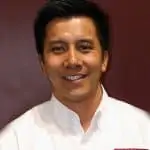
Solavann (Sol) Sim, a Project Director and OM&M Western Regional Manager for SCS Field Services, has expertise in all facets of landfill operations, including landfill gas and liquids management. His teams keep landfills safer and running within compliance. He is a licensed professional engineer in Alaska, Arizona, California, Colorado, Hawaii, Montana, New Mexico, Nevada, Oregon, and Utah.

David P. Hostetter, Business Manager for SCS RMC® (Remote Monitoring and Controls), works in environmental engineering and technology. He serves clients by leveraging technology to reduce business and industry environmental impacts. His environmental solutions reduce potential greenhouse gas emissions and lower environmental risk from landfills, thus protecting workers and local communities.
Marketing Specialist Dana Justice of SCS Engineers shares her favorite snack on Snacks with a Surprise while discussing Brownfields’ economic potential, the environmental impact, and the opportunity to serve communities through her support. Her work with SCS’s environmental consultants and engineers provides land remediation and Brownfields grants bringing properties with a past back to pristine condition. The redevelopment of these properties, typically with developed infrastructure already in place, provide jobs, housing, parks, and tax revenues for the surrounding community.
Learn more about the Urban Land Institutes’s Women’s Leadership Initiative or
more about Brownfield Remediation and Grants here.
SCS Engineers announces Brittney Odom’s promotion to the Southeast region’s Environmental Services Director. Odom will continue expanding and integrating SCS’s environmental engineering and consulting operations to provide more streamlined and efficient services in her new role. She will lead environmental operations in Alabama, Florida, Mississippi, Georgia, and the Caribbean. As with all SCS leaders, she continues serving her clients in Boca Raton in her expanded role.
Odom supports real estate developers, municipalities, banks, and insurance firms to identify properties’ environmental conditions. Next, depending on soil, water, and geotechnical testing determines the appropriate environmental due diligence and the engineering activities necessary to redevelop them and be in 100% compliance with local and federal rules.
There is an active push to develop more affordable residential housing in the U.S. Real estate developers and residents want to be close to business and transportation hubs, but potential development sites could require remediation. Once agricultural sites, golf courses, or at one-time housing industrial operations, these properties need environmental testing, due diligence, possibly remediation, or vapor intrusion barriers to ensure the safe redevelopment. No matter the condition, properties with a past can return to pristine condition and make desirable residential and mixed housing locations, supporting economic development.
“It’s important to know and understand all of the options ahead of time to keep costs down and environmental quality up for sustainable communities,” stated Odem. “You need to reassure all parties that there is no leaking storage tank or anything that could compromise health.”
Her focus recently is on the redevelopment of large-size properties contaminated with arsenic and other legally applied pesticides. These property types include golf courses and agricultural land that have become inactive but are in high demand for residential use. These projects may need soil management, including remediation, soil blending, and placement restrictions.
Odom has years of experience conducting environmental site assessments, overseeing remediation activities, and submitting regulatory reports, including Phase I & II assessments in Florida, Tennessee, Louisiana, Texas, and the Caribbean. These focus on gas station properties and bulk storage terminals for large oil companies, often located on prime waterfront sites.
Additional highlights in Odom’s professional career include expertise in the applicable Florida Regulatory Chapters and Standard Operating Procedures. She also has experience in state and international cleanup efforts and their associated regulatory procedures. She participated in successful environmental closure efforts, with imposed engineering controls and property restrictions.
Odom has ten years of experience managing subsurface investigation and conducting oversight during remedial activities, including source removal and remediation system installation. She holds certifications in 40-Hour HAZWOPER/OSHA training, Loss Prevention System, CPR, RCRA Hazardous Waste, DOT Hazardous Waste, and American Petroleum Institute certification.
“Brittney’s breadth of experience solving the complexities of large scale redevelopment while meeting all environmental regulatory compliance enables her to innovative better solutions,” said Carlo Lebron, SCS vice president and director of SCS’s Southeast operations. “She’s an expert, with access to our deep bench of engineers, scientists, technology, and even economists within SCS.”
SCS Engineers and Florida East Coast Industries (FECI) are to be honored at the annual conference in Florida planned for August 2021. The firms will receive a 2021 Engineering Excellence Award by the American Council of Engineering Companies of Florida. The honor acknowledges SCS for the environmental engineering firm’s innovative design that integrates groundwater remediation with the stormwater management system on a 500-acre former landfill site. The design enabled the developer to remediate the former landfill into the Countyline Corporate Park in Southeast Florida.
Industrial real estate is in high demand, but former landfills and brownfields present environmental challenges that can become cost-prohibitive to redevelop without sound environmental expertise. FECI retained the professional services of SCS Engineers to provide consulting and design services addressing the environmental concerns preventing the transformation of a former landfill into a state of the art business park.
Environmental guidelines require 28% (or about 140 acres) of the site to be set aside for stormwater retention. The set aside would require the relocation of several thousand cubic yards of waste and prevent the 140 acres’ redevelopment. The estimated loss of $300 million in potential real estate sales, coupled with the groundwater remediation expense, made the site redevelopment cost-prohibitive. Unless resolved, the problem also impeded FECI’s corporate sustainability goals.
SCS’s experts in landfill design, closure, and remediation, developed a solution tying together the groundwater remediation and stormwater management systems. The integrated system allows for shallow aquifer recharge with stormwater and captures impacted groundwater at the site’s boundary. “We were able to provide an alternative design acceptable to all the permitting agencies, eliminating the need to set aside large areas for stormwater retention,” said Mr. Som Kundral, P.E., SCS’s senior project manager.
SCS’s remedial actions protect public health while opening the site for reuse. The project will be completed in phases. Phase I, consisting of 160 acres, is complete, with two million square feet of occupied businesses and a 30-acre community park. Development of the other three phases, which include another six million square feet, is underway.
The development will create hundreds of new jobs, deliver several hundred million dollars to the city and county tax base, and provide a 30-acre public park. “The engineering solution protects the environment while meeting FECI’s strategic, social, economic, and sustainability goals,” said Mr. Eduardo Smith, P.E., SCS’s senior vice president of client success.
Learn more about these related topics, events, and case studies at SCS Engineers:
…it’s like balancing a chemical equation to get the right answer.
SCS Engineers works with insurance firms, and we understand the insurance industry’s involvement in environmental and engineering projects. Our professional staff, located according to their knowledge of regional and local geography, regulatory policies, and industrial or scientific specialty, are available nationwide. SCS professionals are sought after as technical experts, admitted as expert witnesses, and support legal counsel in a variety of environmental and regulatory litigation matters.
Rising to meet the needs of insurance companies, SCS has the resources and professionals to assist commercial, industrial and municipal clients with a wide range of environmental and engineering issues and scenarios that can occur in the course of business operations. As a result, SCS also assists clients who have the need for, and exposure to, environmental insurance policies, assisting with coverage-related matters and claims. For our engineering and environmental clients, SCS has the depth of insurance experience and technical expertise to provide the guidance needed to help with environmental claims and can act as a liaison to facilitate a more straightforward claim process.
Environmental insurance can cover regulatory agency-required cleanups, bodily injury, property damage, and associated legal expenses that may result from a contamination event. Contamination and the mitigation process are expensive, often more expensive than prevention. Contamination is usually accidental, such as a spill, but may transpire over time or be a pre-existing condition. Environmental insurance protects companies by covering the expense of assessing contamination and performing remediation, thus restoring the environment and helping to keep the business operating safely. Our experience includes a wide range of environmental claim scenarios (i.e. gasoline/service stations, transportation accidents, the oil and gas industry, manufacturing and industrial facilities, asbestos, mold), which dovetails extremely well with SCS’s own numerous business sectors.
The 5 W’s of Environmental Insurance
SCS Engineers Environmental Insurance Services and Case/Claim Studies
Partial Reprint of EPA Press Release
Over the past three years alone, EPA has assessed 6,572 properties, completed cleanups at 638 properties, and made 2,900 properties ready for anticipated reuse. Over this same period, more than 43,000 jobs have been leveraged as a result of Brownfields’ actions.
EPA recently announced the selection of 155 grants for communities and tribes totaling over $65.6 million in EPA Brownfields funding through the agency’s Assessment, Revolving Loan Fund, and Cleanup Grant Programs. Many of the communities and tribes selected can potentially assess or clean up brownfield sites in census tracts designated as federal Opportunity Zones.
“Without redevelopment opportunities, urban and rural communities – even those with deep historic roots – can eventually wither,” said OLEM Assistant Administrator Peter Wright. “Brownfields remediation and revitalization support communities by investing in the redevelopment of existing properties in the community.”
Since EPA’s Brownfields Program began in 1995, it has provided nearly $1.6 billion in Brownfield funding to assess and clean up contaminated properties and return blighted properties to productive reuse. EPA’s Brownfields funding has leveraged more than $32.6 billion in cleanup and redevelopment from both public and private sources, which in turn has produced more than 167,000 jobs. This is an average of nine jobs per $100,000 of EPA investment and more than $17 in private funding for each dollar of EPA Brownfield grant funding.
Brownfields grants have been shown to:
Background:
A Brownfield is a property for which the expansion, redevelopment, or reuse may be complicated by the presence or potential presence of a hazardous substance, pollutant, or contaminant. The Brownfields program empowers local leaders and communities to transform underused and distressed properties into community assets across America. Brownfields funds assess and cleanup vacant, underused, and potentially contaminated properties so that property can be reused as housing, recreation, and open space, health facilities, social services, or commercial sites. There are estimated to be more than 450,000 Brownfields in the United States.
For more information on successful Brownfields program applications, site revitalization, and success stories nationwide visit Brownfields and Voluntary Remediation. If you’d rather jump right into a few success stories, click on these below:
Locate a Brownfields and remediation expert near you – SCS Staff
Blighted properties are common in many urban areas, and with due diligence often present cost-effective and profitable redevelopment opportunities. Redevelopment of these types of projects is often referred to as Brownfield projects if considering the presence or potential presence of contaminants in the subsurface. Brownfields redevelopments can present great benefits and advantages to the surrounding community.
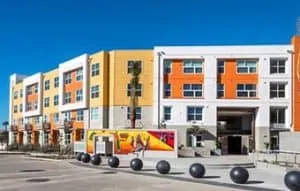
Advantages of the redevelopment of these properties include: revitalizing a property and surrounding properties, creating jobs, rejuvenating businesses, adding much-needed housing, increasing tax revenue, reducing crime, and increasing the efficiencies and quality of life for residents and workers.
Redevelopment of blighted properties does come with challenges, such as density, parking, financing, city approvals, and more. Blighted properties can have environmental issues that are best addressed proactively to reduce the risk of cost and schedule overruns as future liability issues during redevelopment.
These issues should start to be addressed during due diligence and before construction activities commence to reduce the uncertainty on potential project costs and timeline implications. Environmental issues can sidetrack the development process of some properties but most sites, if handled correctly, can present significant upside if these issues are identified during the due diligence and integrated into the development processes.
Common environmental concerns include:
Identifying environmental risks before the acquisition of properties is critical, as is assigning potential costs to these risks. Depending on the nature of the transaction, these items are often useful as leverage during negotiations.
A Phase I Environmental Site Assessment is a good starting place for identifying whether environmental issues may exist at a property. If a Phase I identifies potential risks, these reports may recommend additional investigation (Phase II) in the form of soil, soil vapor, and groundwater sampling. Phase II is used to identify whether contamination is present (i.e., from fuels, solvents, pesticides, toxic metals), and with enough sampling can determine the extent and magnitude of contamination.
Resolving these impacts can include leaving and managing impacted soil in place as much as possible since the significant cost from impacted soil is digging it up and paying to dispose of it. Regulatory agencies such as the local health departments, if approached under voluntary cleanup assistance programs, can accommodate leaving all or a good portion of impacted soil in place if the risks to human health and the environment are identified and resolved in a mitigation plan.
For more significant contamination issues, such as extensive soil and groundwater contamination from a gas station or dry cleaner releases, funding in the form of State or Federal grants can be available. Obtaining a grant with the help of a qualified environmental consultant can be the difference-maker in acquiring, cleaning up, and redeveloping a blighted property. These grants don’t typically cover all the costs associated with these cleanups but can cover the majority of these costs with some additional time required to do a cleanup.
Developers can also take out an environmental insurance policy to console a nervous lender or investor. Environmental insurance can cover clean-up requirements, third-party claims for bodily injury and property damage, and associated legal expenses resulting from pollution or contamination. Policies with various term lengths and deductible amounts are available to satisfy the concerns of lenders or equity investors.
The redevelopment of blighted urban properties is a necessary part of the life cycle of a property and a community. It’s critical to identify potential environmental risks during the due diligence process – before you choose to purchase the site. With proper planning, the mitigation or remediation of these impacts can be incorporated into the development process and result in a vibrant, profitable project that protects human health and the environment, and help owners, lenders, investors, and users of these properties sleep well at night.

Learn more about Brownfields | Learn more about Due Diligence
Wednesday, December 11, 10:45 am – 11:45 am, Room 403A
Track 2: Financing Options, Real Estate, & Economic Development

4:30 pm – 6:00 pm, Exhibit Hall, West Hall A


Mr. McLaughlin advises developers, contractors, lenders and land development professionals on the technical and regulatory requirements for construction on Brownfields’ sites nationwide. His combined engineering and legal background provides an unusual perspective on land development where hazardous wastes or other environmental challenges are present. Redevelopment of closed landfills is an area of special interest; he worked on his first such project in 1976.
Mr. McLaughlin has worked at some three dozen Superfund National Priorities List sites in 17 states, and on scores of regulatory compliance, voluntary cleanup, and remediation projects for commercial, industrial, municipal, and military clients.
Thursday, December 12, 3:30 pm – 4:45 pm, Room 411
Track 1: Sustainability, Livability, Resiliency
This 75-minute clinic provides a fun and engaging hands-on experience that will inspire you to tackle the challenges of stormwater flooding using GSI on brownfields. Experts, including Jonathan Meronek, will explain the applications, techniques, and benefits of using GSI on any project site, including the challenges of implementing GSI on Brownfield Sites. During the guided exercise, participants will break into small think tanks, and each think tank will have an opportunity to design their own solution. Come to this session to soak up information on techniques and strategies for integrating GSI into your community’s overall planning efforts.
Per- and poly-fluoroalkyl substances (PFAS) are receiving increasing attention from regulators and the media. Within this large group of compounds, much of the focus has been on two long-chain compounds that are non-biodegradable in the environment: PFOS (perfluorooctane sulfonate) and PFOA (perfluorooctanoic acid). Long detected in most people’s bodies, research now shows how “forever chemicals” like PFAS accumulate and can take years to leave. They persist even when excreted through urine. Scientists have even tracked them in biosolids and leafy greens like kale. Recent studies have linked widely used PFAS, including the varieties called PFOA and PFOS, to reduced immune response and cancer. PFAS have been used in coatings for textiles, paper products, cookware, to create some firefighting foams and in many other applications.
Testing of large public water systems across the country in 2013 through 2015 found PFAS detected in approximately 4 percent of the water systems, with concentrations above the USEPA drinking water health advisory level (70 parts per trillion) in approximately 1 percent (from ITRC Fact Sheet.) Sources of higher concentrations have included industrial sites and locations were aqueous film-forming foam (AFFF) containing PFAS has been repeatedly used for fire fighting or training.
Source identification is more difficult for more widespread low-level PFAS levels. For example, in Madison, Wisconsin, PFAS have been detected in 14 of 23 municipal water supply wells, but the detected concentrations were below the USEPA’s health advisory levels for PFOA and PFOS. A study of potential PFAS sources near two of the Madison wells identified factories, fire stations, landfills, and sludge from sewage treatment plants as possible sources, but did not identify a specific source.
With the EPA positioned to take serious action on PFAS in late 2019 and 2020, regulators in many states have already started to implement their own measures, while state and federal courts are beginning to address legal issues surrounding this emerging contaminant. State actions have resulted in a variety of state groundwater standards for specific PFAS compounds, including some that are significantly lower than the USEPA advisory levels. These changes mean new potential liabilities and consequences for organizations that manufacture, use, or sell PFAS or PFAS-containing products, and also for the current owners of properties affected by historic PFAS use.
Questions for manufacturers, property owners, and property purchasers include:
If remediation is required, a number of established options to remove PFAS from contaminated soil and groundwater are available, including activated carbon, ion exchange or high-pressure membrane systems. On-site treatment options, including the management of reject streams where applicable, are also available.
Do You Need Help?
Need assistance with PFAS or have an idea that you would like to discuss? Contact for more information.
Use these resources to explore more about PFAS each is linked to helpful articles and information.
An environmental insurance claim is simply the response and mitigation of an environmental issue or event paid for by an environmental insurance policy. Similar to an auto or home insurance claim, a company or individual purchases this type of policy to protect them in case a matter arises about their facility, operations, or property resulting in a regulatory requirement for investigation and remediation; forming the basis for a submitted claim. Such responses cost money, often a lot of it, and the environmental insurance policy is there to pay for the costs associated with the investigation and remediation of any environmental issues.
Any environmental issue can result in an environmental claim, so it is essential that you have the right policy in place to cover a particular claim. Typical issues or events include:
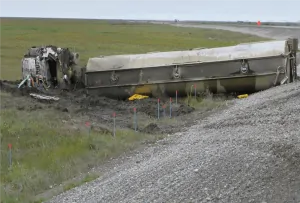
Insurance clients submit notice to the insurance company that an environmental issue occurred or was discovered which requires investigation and corrective action. The onus is on the client to provide sufficient information to substantiate a claim submittal. The insurance company reviews this information in their evaluation of coverage for the issue under the policy.
When a new claim is submitted to the insurance company, the client must provide information that substantiates that an issue exists and that further investigation and corrective action is required. Often their substantiation consists of the initial technical details about the nature and extent of the environmental problem. Claims analysts generally have a strong legal background but may lack technical environmental expertise; this is when insurance support services become valuable. The following paragraphs summarize each step in the process and how SCS insurance support assists claims analysts through the process.
Once the insurance company receives a notice of claim, they determine whether the client’s policy provides coverage for the specific issue or event that constitutes the claim. A claims analyst evaluates the specifics of the claim to determine if the associated details and circumstances fall within the specifics of the client’s policy. If so, coverage is usually accepted. If not, coverage is generally denied.
SCS’s role is to provide an evaluation of the technical aspects of the claim so that the claims analyst can take the distilled facts and compare them against the specifics of the policy; often called a “Source and Timing” evaluation. Take, for example, an underground storage tank (UST) release at a gasoline station. In this example, free product (gasoline) is observed in an on-site monitoring well where no free product has previously or recently been identified.
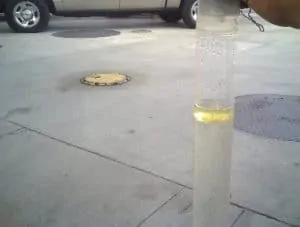
The station owner or their environmental consultant reports the apparent new release to the regulator, and a confirmed discharge is recorded. The property owner than notifies the insurance company of a gasoline release to the environment.
As part of the “Source and Timing” evaluation, SCS’s insurance support reviews tank system leak detection and inventory records, tank system tightness testing records, previous groundwater monitoring data, reports of any earlier releases at the facility, and any other information or data about the facility and the subject release. The goal is to identify:
If enough information is available to make these determinations, then the claims analyst compares the SCS report to the coverage specifics and exclusions included in the policy; determining if the event is covered. The claims analyst will usually try to make a coverage determination on their own if the facts are relatively straightforward, but often that is not the case, and the assistance of insurance support services is necessary.
This process can be straightforward, such as in the case of a tanker truck rollover or industrial facility chemical spill, but is often more complicated when insufficient information is available to make a source and timing determination. In the latter case, the claims analyst issues a Reservation of Rights letter, stating that the insurer is not accepting or denying coverage at this time as the circumstances of the claim are still under evaluation and investigation.
Claims can be denied if the incident occurs before or after the policy period; if the source or type of incident are not included or are specifically excluded under the policy; or if the incident occurred because of the client’s negligence. If coverage is denied no further actions are generally necessary on the part of the insurance company. Whether a claim is accepted or denied is often more complicated than what we’ve discussed here.
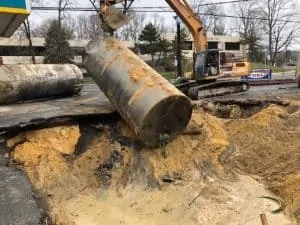
The claim is accepted; undoubtedly good news for the client. What happens now is that the claim becomes “Active,” requiring among other things for the claims analyst to set reserves. A reserve is an estimate of what the claim is going to cost the insurance company. Your insurance support consultant can provide a rough approximation of the estimated costs to achieve regulatory closure, which includes all expenses incurred from investigation through remediation, post-remediation monitoring and reporting.
Early in the life of a claim, these are preliminary estimates that are refined as a project progresses, often requiring the claims analyst to adjust their reserves; important to the insurance company as future reserves impact financial forecasts. Insurance support services will develop the cost-to-closure estimate based on all available information and data, as well as their professional experience on similar projects. The insurer wants the most experienced environmental consultants and engineers on the case because their estimates are more likely to be on target and identify potential regulatory issues or risks.
From the insurer’s standpoint, the primary goal is to maintain a high level of responsiveness to their clients and process requests for reimbursement against the claim. The role of your insurance support team can continue by managing quality control and evaluation of site-specific activities; ensuring that the investigation and cleanup are reasonable and appropriate given the environmental conditions at the site, all applicable regulatory requirements, and costs consistent with industry standards for recovery. The client and their environmental consultant are required to provide the insurer and the insurance support consultant documentation of the work as follows:
Over the life of a claim, insurance support may correspond with the project consultant on behalf of the insurer, conduct site visits, and be asked to participate in meetings, conference calls, and mediations. The overall goal of your insurance support consultant is to assist claims analysts in closing a claim in the most time-efficient, cost-effective manner possible within all regulatory rules and guidelines.
Once an active claim−environmental project has achieved regulatory closure, the claims analyst begins the administrative process of closing the claim. From SCS’s insurance support standpoint, all that remains is to obtain the appropriate documentation from the regulator confirming that the subject project is approved for closure and that no further actions are required.
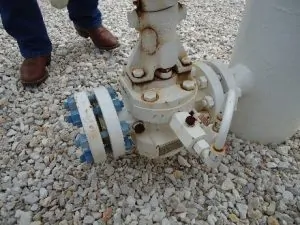
There are other circumstances which may result in closing a claim, such as exceeding the maximum total cost that can be paid out by the policy, non-compliance with policy requirements, or new information coming to light which results in a change in coverage position by the insurer. In some cases, such as when there is a change in coverage position or the cause of the issue can be attributed to a third party equipment failure, the insurer may seek to recover costs expended from the client and third-party policies. That process, called subrogation, may require the expertise of your insurance support specialist and at times their testimony as an expert witness.
There are several ways that SCS helps our insurance clients and other clients. The involvement of insurance companies is becoming more pervasive throughout environmental consulting and engineering in all business sectors. The combination of SCS’s industry expertise, contacts associated with our insurance support services, and our Federal, State, and local level regulatory expertise brings more knowledge and efficiency to each project. SCS offers a wide range of engineering and environmental services, a national presence, and a positive established industry reputation.
Our clients appreciate being able to draw upon our insurance-related expertise to assist them with their submittals, interpreting insurance requirements, and liaising with insurance companies as part of our core capabilities.
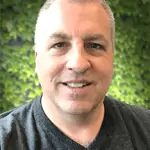
Mr. Michael Schmidt is an accomplished industry leader with nearly 30 years of progressively responsible experience in the environmental consulting and environmental insurance industries. He has specific expertise focusing on the evaluation of environmental risks and liabilities associated with insurance claims and underwriting, site investigation and remediation, due diligence, and project management.
Feel free to use our website to share our blogs, whitepapers, case studies, events, and news. SCS respects your privacy.